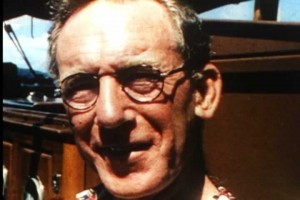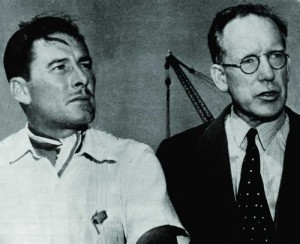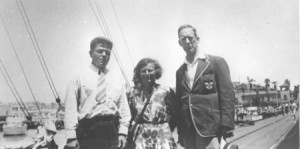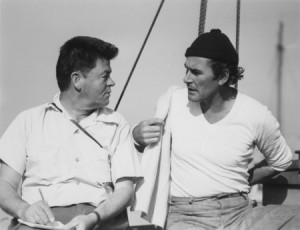Professor Flynn is reported to have identified what may have been perhaps dozens of possible new species of marine life on the “Cruise of the Zaca” in 1946. Three of these were said to have been named G. Errolae, G. Norae & G. Zacae, after his loving son, his lovely daughter-in-law, and, of course, the majestic vessel on which he sailed, the Zaca.
Here is some data on Leuckartiara Zacae, discovered and named in 1940, when Zaca still belonged to Templeton Crocker.
Does anyone know anything regarding any formal registrations of G. Errolae, G. Norae & G. Zacae, or any of the other marine life discoveries made during “Cruise of the Zaca”?
— Tim






timerider
February 14, 2015 at 4:09 pm
I was working for biologists in the east on rivers, streams and ocean bay. I almost had an honorary Associates degree. I’m very interested in the work of the elder Flynn. That period for me was the most fun and enjoyable adventure in my youth. I’d like to comment on the fact that Errol looks nothing like his father at all! Errol’s mother was very good looking and maybe some grandparent passed glamour genes along the way, LOL.
Gentleman Tim
February 15, 2015 at 8:23 am
No doubt Lily/Marelle was very-good-looking, timerider. Here’s a younger version of The Professor displaying a rather handsome air of intelligence and confidence that must have much impressed young Errol.
[img]http://www.theerrolflynnblog.com/wordpress/wp-content/uploads/2013/08/Young-Thompson.jpg[/img]
Gentleman Tim
February 18, 2015 at 3:13 pm
Progress> According to the article by renowned marine biologist (and giant squid expert), Frederick Aldrich linked below, Errol & Professor Flynn’s “Cruise of the Zaca” resulted in the “taking” of:
“no fewer than fifty new or unusual species of fish … ”
Among these were:
“[T]here new herrings of the genus Gibbsonia … ”
These “new taxa” were “patronymically” named by “Theo” (Professor Flynn) as:
“G. Errolae” “G. Norae” and “G. Zacae”
There were significant observations of sea lions, sea elephants and seals at the San Benito Islands
Additionally, observations of flying fish figured significantly in an academic publication by (Scripp’s legendary ichthyologist) Carl Hubbs, who can be seen throughout the film.
This map helps locate some of the islands Flynn explored during this scientific expedition, which, after arriving in Acapulco, became more of a swashbuckling adventure.
[img]http://www.oceanlight.com/legacy_image/eastpac1.jpg[/img]
Gentleman Tim
February 19, 2015 at 12:35 am
Three Forced Landing abd a Chubasco!
publishing.cdlib.org…